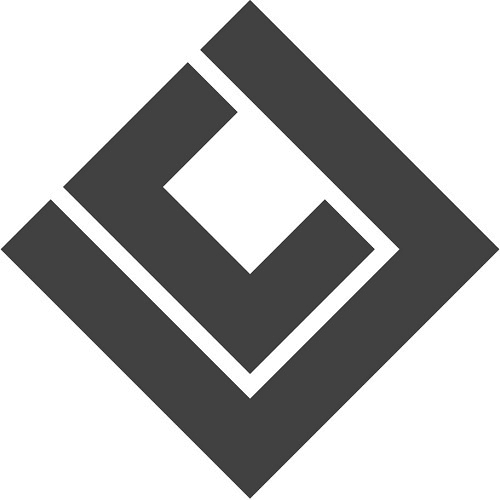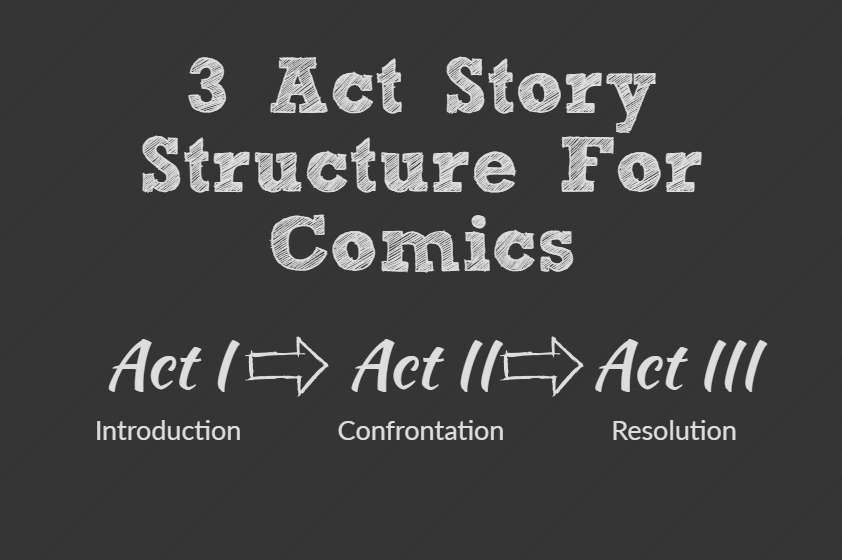Intro
When I first wanted to start writing comics I quickly found out how little I knew about how to create a compelling story. Which was something that I found every comic I read had. It was at this point that I started to do some reading into screenwriting practices and techniques.
The reason why I did this is simple. Comics are like plays, movies, and tv shows. They are broken down by scenes. A series of panels are simply how the story is presented as if the camera was angled a certain way to capture the characters doing their thing.
This article will discuss how someone could use the 3 Act story structure for comics.
Quick Summary
The practice of using the 3 act story structure for comics is possible for the same reason it can be used for almost any type of story writing. It gives you a general roadmap of what you’re going to need to include in your story.
Each act has it’s very specific purposes and characteristics that make it different from the next.
The three acts work in a specific order that can’t be ignored.
- Introduction
- Confrontation
- Resolution
Act 1: Introduction
In the first act, you’re going to be introducing all major characters and the world they live in. It’s at this stage that you will start to narrow the possibilities of what makes sense and what doesn’t.
You can’t expect characters or a world order to behave differently later down the story that would be inconsistent with how they are presented at this stage of the story.
Hook
You also want the first act to include an eye-catching scene to get your readers interested in what you’re presenting. You may want to take advantage of your artist at this point!
The hook is most often an experience that forces a change in a character’s routine. Something new and unexpected that can challenge or encourage them.
A good hook can convince a reader of the value that your story holds from the very beginning.
It Ends With The 1st Plot Point
The first act ends with the introduction of the first plot point. This can be, for example, when the superhero first gets their powers. Or when a character falls in love at first sight with their love interest.
Like the article so far? Support the production of more articles like this one!
Act 2: Confrontation
This is probably the hardest part of the writing experience with this particular practice. All major characters are introduced, conflicts have been established and the general feel for the story is made clear. Now the writer must figure out how to frame their narrative.
Subplots
It just so happens that writers do have elements they can introduce at this stage of the writing process. A subplot just so happens to be one of them.
A subplot is a minor story layered within the main plot. It can be used to add realism to characters by allowing them to engage in a non-main-plot-related behavior. This minor story is still relevant to the major story and most often it has some relationship with the central theme.
This element gives you a chance to develop your characters by presenting additional conflict other than the one introduced in the first act.
Midpoint
In the second act, the stakes escalate. A main character’s mission or goal has to be made clear.
It Ends With The 2nd Plot Point
Not unlike Plot Point #1, Plot Point #2 also affects the main character by changing the direction they’re headed. The only difference, in this case, is that the story has become more intense.
Everyone understands what is at stake and the pressure is on. This is commonly a moment of crisis, where all hope seems lost.
Act 3: Resolution
This section of the story is probably going to end up being your shortest. This sections should include the Final Confrontation and the Denouement.
Final Confrontation
The final battle. Good vs evil, the righteous vs the corrupt, so on and so on. This is the moment the whole story has been building up to. The opportunity for the protagonist to complete their challenge, mission or goal.
Denouement
Otherwise known as resolution, this is the part that follows the final confrontation where the writer gets to tie up all of the loose ends.
The main character gets to deal with the consequence of his actions and all subplots reach their conclusion.
Conclusion
Using the 3 act story structure for comics is a viable option for any comic writer at any point in their career. It’s far from being the only one out there, but it’s surely one of the more documented ones.
Select your global block.
Sign Up For
The Unknown Times!
Content Updates
Website News
Recommended Reading
And More to Come!
*Once every two weeks!*
Liked the article? Become part of my Patreon Community!
About The Author

Phillip Allen
Writer, Editor, and Founder of Unknown Comics
Hello there! My name is Phillip Allen and I'm the writer, editor, and founder of Unknown Comics. I am an aspiring comic book creator. In an attempt to learn how to create my own comic I came to learn just how few reliable resources existed out there. From a few books and unhelpful websites I decided to focus my attention on researching and writing a resource for both myself and the rest of the comic creating industry. This website and and its content is the result of all of that hard work.
Sources
Moura, Gabe. “The Three-Act Structure.” The Elements of Cinema. The Elements of Cinema, 1 June 2014. Web. 6 Feb. 2017. <http://www.elementsofcinema.com/screenwriting/three-act-structure/>.

